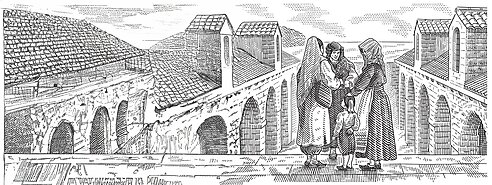Not only was the small city‐state of the Republic of Ragusa at the forefront of freedom for its time, being one of the earliest countries to ban slavery, but the glittering merchant city on the sea was also the site of an early milestone in the history of public health: quarantine waiting periods, which were first implemented in 1377.
Dubrovnik is a beautiful walled city on the Dalmatian coast of Croatia. It’s a UNESCO World Heritage site and one of the most popular tourist destinations in the Mediterranean. But did you know that it was also once home to one of the freest and most cosmopolitan societies in Europe and one of the first societies to implement comprehensive public health measures to contain disease? Chelsea Follet writes, “Not only was the small city‐state of the Republic of Ragusa at the forefront of freedom for its time, being one of the earliest countries to ban slavery, but the glittering merchant city on the sea was also the site of an early milestone in the history of public health: quarantine waiting periods, which were first implemented in 1377.”

